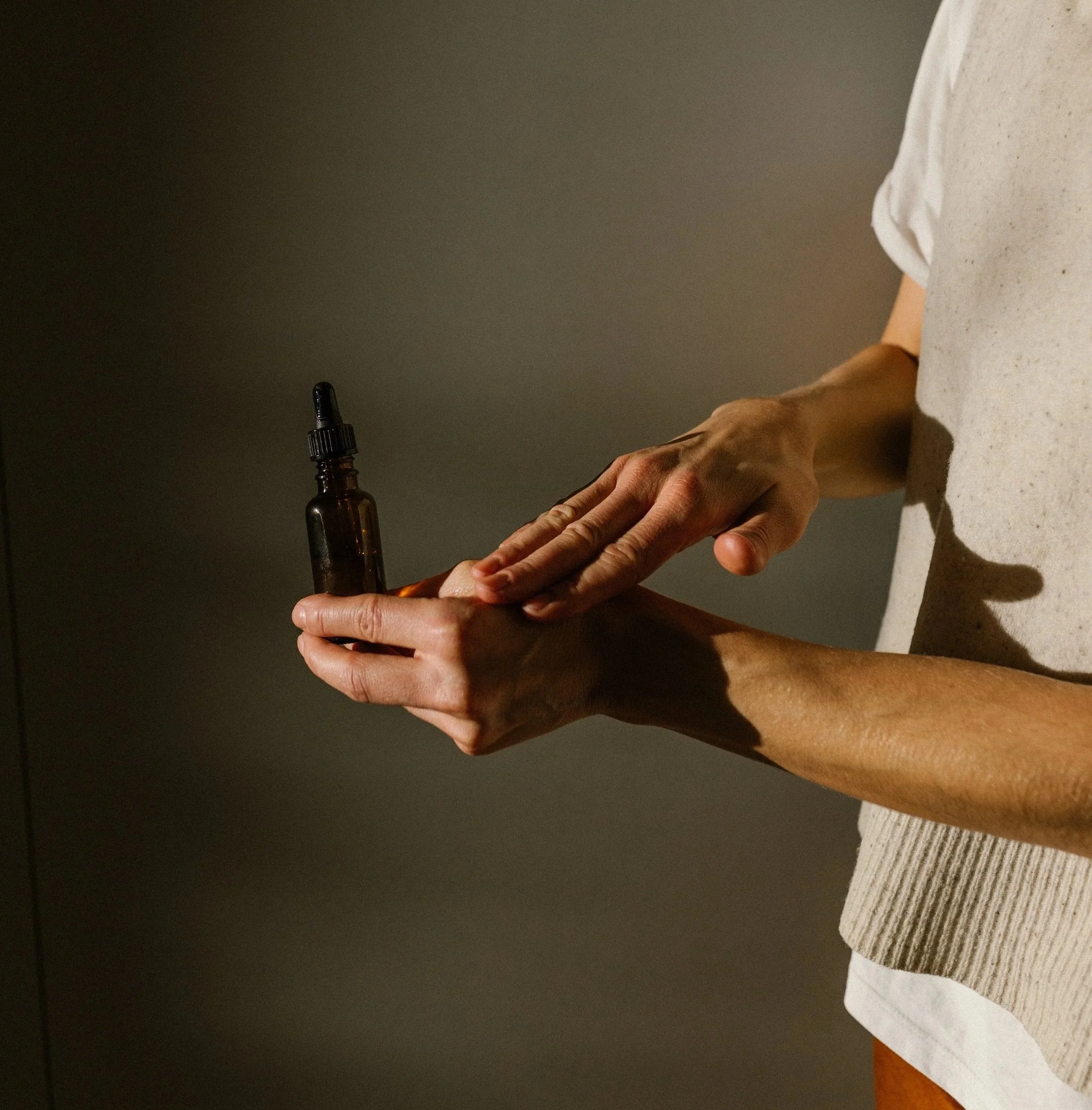Aroma
Introduction
Aromatherapy is a simple and effective way to support wellbeing through the natural properties of plants.
By working with essential oils — concentrated extracts that carry both natural aroma and active plant compounds — aromatherapy supports the body’s natural processes of regulation and renewal.
It connects the sensory and the biological: a dialogue between scent, chemistry, and the nervous system that influences how our body feels and functions in daily life.
How Aromatherapy Works
Essential oils can influence wellbeing in two complementary ways, through scent and through their chemical composition.
1. Through scent
When inhaled, essential oils stimulate the limbic system, the part of the brain connected to emotion, memory, and stress response.
This pathway supports emotional balance, focus, and relaxation, and is being increasingly researched within areas related to mental health, cognitive function, and stress regulation.
2. Through the plant’s chemistry
Each essential oil contains hundreds of active compounds with measurable physiological effects.
These natural components can support the body in various ways, for example:
Medical applications: antimicrobial, anti-inflammatory, or pain-relieving effects.
Dermatology: calming and regenerative properties that help with skin conditions and cellular repair.
Integrative practice: use alongside massage, acupuncture, or reflexology to support the immune system and recovery processes.
A holistic approach combines both, addressing the body and mind through the synergy of scent and chemistry.
A credible, contemporary wellness tool.
The Subtle Power of Smell
Of all our senses, smell remains the least researched, yet it has one of the most direct pathways to the brain.
The COVID-19 pandemic highlighted just how deeply scent shapes our emotional and social world: many people who lost their sense of smell described feeling disconnected, anxious, or “flat.”
This growing awareness is inspiring new studies exploring how olfaction influences mood, memory, and cognitive function, and how reconnecting to scent might help restore balance and presence.
The Bridge Between Nature & Science
Essential oils carry the plant’s natural chemical compounds that, for instance, can ease tension, support focus, and encourage rest.
Modern research continues to explore how aromatherapy affects heart rate, cortisol levels, sleep, and emotional balance.
Aromatherapy influences these processes through both olfactory stimulation, engaging the limbic system, the brain’s emotional center, and biochemical interaction within the neuroendocrine and parasympathetic systems.
It’s a natural interaction between plants and the body, where scent and chemistry work together to support the nervous system.
How It’s Made and Used
Essential oils are 100% natural, concentrated plant extracts, most commonly obtained through steam distillation or cold pressing.
Because they are so potent, they are usually diluted in carrier oils, creams, or lotions before applying to the skin, or diffused into the air with water vapor for inhalation.
Even small amounts can have noticeable effects on mood, focus, and relaxation.
Safe and Informed Practice
While aromatherapy is gentle, it’s also powerful.
Safety and awareness are essential, especially for children, pregnancy, medical conditions, or ongoing treatments.
Proper dilution, dosage, and understanding individual sensitivity ensure that the experience remains both effective and safe.
A Contemporary Approach
My work with aromatherapy focuses on awareness, presence, and wellbeing.
It’s about understanding how scent, atmosphere, and sensory input can support the nervous system and help us stay grounded in daily life.
Guided by both research and experience, I see aromatherapy as a sensory practice grounded in science, helping the body return to balance.








